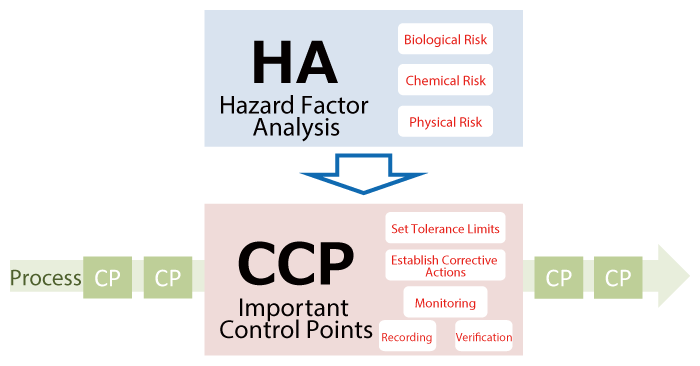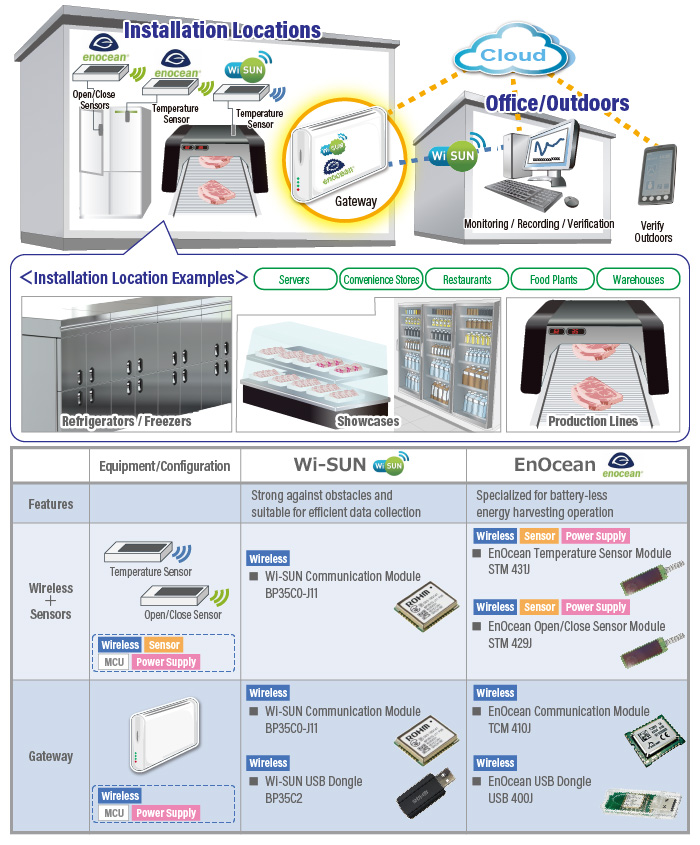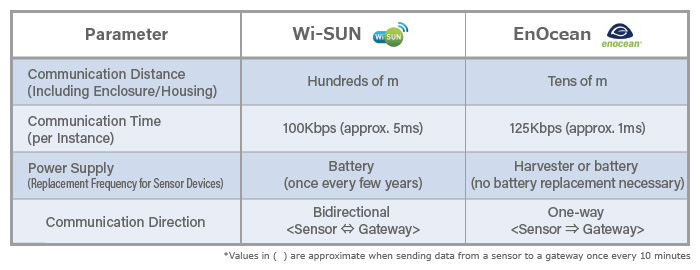HACCP
What is HACCP?
HACCP, short for Hazard Analysis and Critical Control Point, is an international standardized hygiene management method designed to prevent harm and ensure safety by analyzing hazard factors such as food poisoning bacteria and foreign matter contamination in the food manufacturing process and controlling critical points to reduce or eliminate these factors.
This approach was developed by the the CAC (Codex Alimentarius Commission), a joint agency of the FAO (Food and Agriculture Organization) of the UN and WHO (World Health Organization), whose guidelines were published in 1993.
In Japan, the revised Food Sanitation Law was passed in June 2018, clearly stating the mandatory implementation of HACCP as an approach to control processes that are particularly important for preventing the occurrence of food sanitation hazards.
Principles of HACCP
HACCP, which consists of 2 principles, the HA part (short for Hazard Analysis), and CCP (signifying the determination of Critical Control Points), involves applying the 5 elements of ‘setting tolerance limits’, ‘establishing corrective actions’, ‘monitoring’, ‘recording’, and ‘verification’ to the determined critical control points.

[Hazard Factor Analysis and Important Control Points]
Hazard factors are analyzed and identified in terms of biological, chemical, or physical risk and management standards and corrective actions established to reduce or eliminate these risks while continuously performing monitoring, recording, and verification.
Examples of Products Suitable for Process Control
ROHM offers a number of products suitable for process control when implementing HACCP.
For example, ROHM can propose products compatible with 2 wireless standards for collecting process data wirelessly. Namely, Wi-SUN and EnOcean. Adoption examples are shown in the figure below.
[Wi-SUN/EnOcean Adoption Examples]

For example, when sending data from a sensor device to a gateway once every 10 minutes using Wi-SUN/EnOcean, the approximate characteristics of each are shown below. These difference will allow users to select the ideal protocol suitable based on application requirements.

[Wi-SUN / EnOcean Characteristics Comparison]
■Wi-SUN

Wi-SUN, referred to as Specified Low Power Wireless in Japan, is a communication standard that uses the 920MHz band which is less likely to cause interference with existing 2.4GHz wireless while enabling long distance communication with low power consumption. In addition, excellent radio wraparound characteristics ensures stable communication even in places with walls and/or obstacles such as factories.
■EnOcean

EnOcean offers wireless sensor and switch solutions that support energy harvesting.
When retrofitting a sensor for monitoring, it is often necessary to reroute the power supply.
However, EnOcean sensor modules require no batteries, making them easy to install and maintenance-free.




